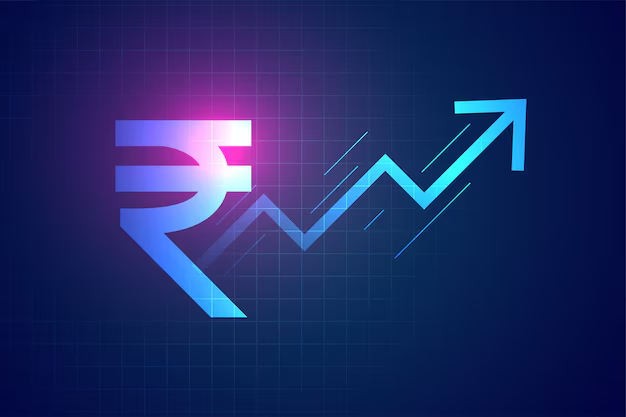The banking industry is undergoing a massive transformation as digital technologies continue to evolve and reshape how financial institutions operate and interact with customers. Traditional banking models are being disrupted by innovations such as mobile banking, blockchain, artificial intelligence (AI), and open banking, creating a more efficient, accessible, and personalized banking experience. In this article, we will explore the key trends shaping the future of banking, the challenges and opportunities brought by digital transformation, and the innovations that are defining the next generation of financial services.
1. The Rise of Digital-First Banking
The most significant shift in banking today is the transition from traditional brick-and-mortar branches to digital-first banking models. Digital banking refers to the provision of financial services through online and mobile platforms, eliminating the need for customers to visit physical branches for most transactions.
- Mobile Banking and Apps: The rise of smartphones and mobile apps has led to a surge in mobile banking adoption. Customers can access their bank accounts, make payments, transfer money, and even apply for loans directly from their phones. Mobile banking provides convenience and accessibility, allowing users to manage their finances anytime, anywhere.
- Digital-Only Banks (Neobanks): Neobanks are digital-only banks that operate without physical branches. These banks offer a wide range of financial services through apps and online platforms, often with lower fees and more personalized services. Neobanks have become popular, especially among younger generations who value convenience and technology-driven solutions.
- Omnichannel Banking: While digital banking is on the rise, many traditional banks are adopting omnichannel strategies. This involves integrating both digital and physical banking channels to provide customers with a seamless experience. Whether customers prefer visiting a branch or managing their accounts online, omnichannel banking ensures consistency across all platforms.
2. Blockchain Technology and Cryptocurrencies
Blockchain technology, the foundation of cryptocurrencies like Bitcoin and Ethereum, is revolutionizing the banking sector by offering greater transparency, security, and efficiency in transactions.
- Decentralized Finance (DeFi): DeFi is a rapidly growing sector that leverages blockchain technology to provide financial services without the need for traditional intermediaries like banks. DeFi platforms offer lending, borrowing, trading, and investing services through smart contracts and decentralized protocols.
- Cryptocurrency Adoption: Cryptocurrencies are becoming increasingly accepted by mainstream financial institutions and businesses as an alternative to traditional currency. Banks are exploring ways to incorporate cryptocurrencies into their offerings, including allowing customers to buy, sell, and store digital assets. Additionally, central banks are exploring the creation of Central Bank Digital Currencies (CBDCs), which are digital versions of national currencies.
- Cross-Border Payments: Blockchain technology is also streamlining cross-border payments by reducing transaction costs, speeding up processing times, and eliminating intermediaries. International transfers, which traditionally take days to process and incur high fees, can be completed almost instantly using blockchain-based platforms.
3. Artificial Intelligence (AI) and Machine Learning
AI and machine learning (ML) are playing a crucial role in transforming banking operations and customer service by automating processes, enhancing decision-making, and delivering personalized experiences.
- Chatbots and Virtual Assistants: AI-powered chatbots and virtual assistants are increasingly used in banks to provide real-time customer support. These intelligent systems can handle a wide range of queries, from account inquiries to transaction processing, improving the customer experience and reducing the workload on human agents.
- Fraud Detection and Security: AI and machine learning algorithms are being used to detect and prevent fraudulent activities by analyzing transaction data in real time. These systems can identify unusual patterns, flagging potential fraud attempts before they happen, and providing enhanced security for online banking transactions.
- Personalized Financial Services: AI is enabling banks to offer highly personalized services by analyzing customer data and providing tailored recommendations. For example, AI can analyze spending patterns to recommend budgeting tools, savings goals, or investment opportunities based on individual preferences and financial behavior.
- Risk Assessment: Machine learning models are improving credit scoring and risk assessment processes. By analyzing a broader range of data points, including transaction history, social behavior, and alternative data, AI systems can offer more accurate assessments of a customer’s creditworthiness, making financial services more accessible.
4. Open Banking and APIs
Open banking is a model that allows third-party developers to access bank data (with customer consent) through APIs (Application Programming Interfaces). This is creating an ecosystem of innovation where fintech companies, startups, and other financial institutions can build new financial products and services.
- Improved Customer Choice and Competition: Open banking enables customers to share their financial data securely with multiple banks and fintech platforms, allowing them to compare products and services more easily. This increased transparency and competition can lead to better deals, lower fees, and more innovative offerings.
- Collaboration with Fintech: Traditional banks are increasingly collaborating with fintech companies to offer innovative solutions. For example, banks may partner with startups to provide customers with specialized services such as personal finance management, investment advice, or alternative lending platforms.
- Third-Party Payment Providers: With open banking, third-party providers can initiate payments directly from customers’ bank accounts. This creates new opportunities for seamless payment processing in e-commerce, peer-to-peer transfers, and other digital payment systems.
5. Cybersecurity and Data Privacy
As banking becomes more digital, the importance of cybersecurity and data privacy has never been greater. Banks are investing heavily in advanced security measures to protect their systems and customer data.
- Biometric Authentication: Banks are increasingly using biometric methods such as fingerprint scanning, facial recognition, and voice recognition to enhance security and provide frictionless access to accounts. These methods offer a higher level of protection compared to traditional passwords and PINs.
- Encryption and Blockchain: Data encryption and blockchain technology are playing key roles in securing online transactions and protecting sensitive customer information. Blockchain’s decentralized nature makes it more difficult for hackers to compromise data, while encryption ensures that data remains private during transmission.
- Regulatory Compliance: Banks must comply with stringent regulations regarding data privacy, such as the General Data Protection Regulation (GDPR) in the European Union and the California Consumer Privacy Act (CCPA) in the United States. These regulations ensure that banks protect customers’ personal and financial data, and they must implement robust security measures to avoid penalties.
6. Sustainability and Green Banking
The banking sector is also embracing sustainability and social responsibility, driven by growing consumer demand for eco-friendly and socially conscious financial products.
- Green Financing: Banks are increasingly offering financing options for projects that promote sustainability, such as renewable energy, energy-efficient buildings, and electric vehicles. Green bonds and sustainable investment funds are gaining popularity as consumers seek to align their financial choices with their values.
- Sustainable Banking Practices: Many banks are adopting sustainable business practices by reducing their carbon footprint, investing in renewable energy, and promoting responsible lending. Some banks are even incorporating environmental, social, and governance (ESG) criteria into their lending and investment decisions.
7. The Future of Branch Banking
While digital banking is rapidly gaining traction, physical bank branches are not disappearing completely. However, their role is evolving.
- Branch Transformation: Instead of being primarily transactional spaces, branches are transforming into customer service hubs and advisory centers. Bank branches are increasingly being used for consultations, financial planning, and offering specialized services.
- Hybrid Models: Some banks are adopting hybrid models, where digital services are complemented by a reduced number of physical branches. This allows customers to enjoy the benefits of both digital banking and face-to-face interactions when needed.
Conclusion
The future of banking is being shaped by digital transformation and innovation across every aspect of the industry. As mobile banking, AI, blockchain, open banking, and cybersecurity become more prevalent, the banking experience is evolving toward greater efficiency, personalization, and accessibility. At the same time, financial institutions are faced with the challenge of adapting to new technologies while ensuring that they meet regulatory requirements and maintain customer trust.
In this rapidly changing landscape, banks that embrace innovation, collaborate with fintech companies, and prioritize customer-centric solutions will be well-positioned to succeed in the future. The transformation of banking is not just about adopting new technologies—it’s about creating a more inclusive, sustainable, and secure financial ecosystem that meets the evolving needs of consumers and businesses alike.




